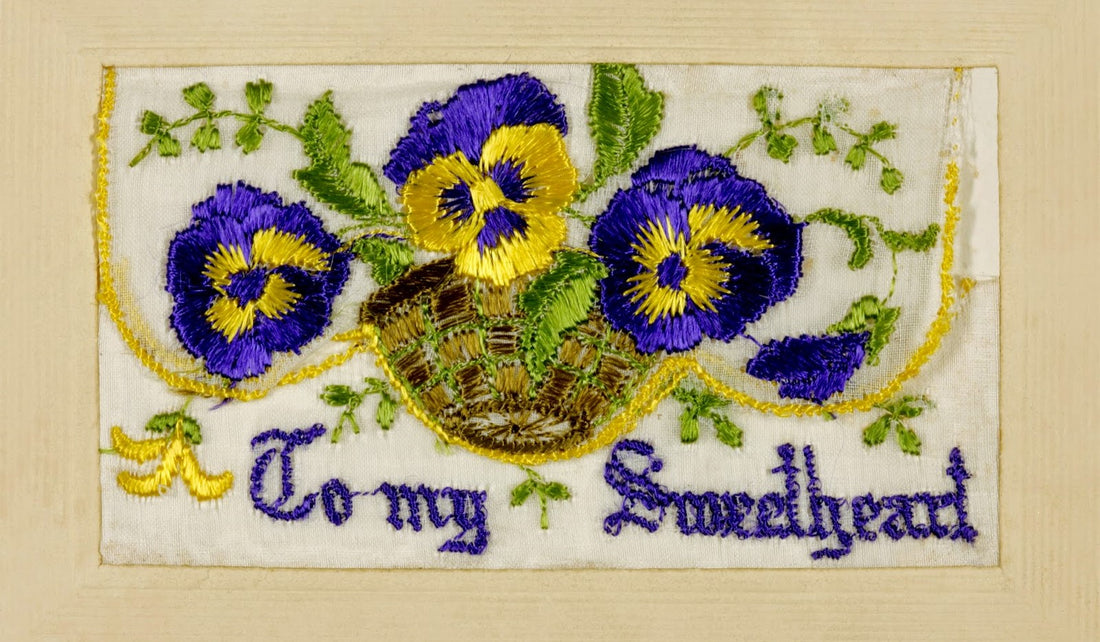
Embroidered Silk Postcards

Image: First World War silk embroidered card from the Ephemera Collections, September 1917, Sir George Grey Special Collections, Auckland Libraries. Via Heritage et AL.
This Valentine’s Day, we take a minute to consider the history of the romantic greeting card with an extract from Issue 27: Frugal where Sarah Jane Downing introduces the world of collectible silk postcards, first popular with the advent of the penny post in 1840.
“In the Victorian era greeting card production became a lucrative industry, a development that coincided with a downturn in fortunes of silk manufacturers who faced serious competition from new artificial silks. Coventry ribbon manufacturer Thomas Stevens applied indomitable Victorian ingenuity, inventing the Stevengraph to save his flagging business. Based on the Jacquard loom method, it used punched cards to weave thousands of coloured threads into anything from simple floral sprays to replicas of famous paintings.

Image: Embroidered card, embellished with the flags of the Allied Forces, sent by Samuel Edmund Bodger, a Gunner in the Royal Artillery. Europeana 1914-1918.
Inspired by Stevens' success, other manufacturers followed suit. Bradford company, W N Sharpe published 'The Patent FAB Patchwork Card' which had a decorative square of silk that could be cut out and worked into a pin cushion or tea cosy. Raphael Tuck's bright printed cards were immensely popular, but with the addition of silk fringe they captured a new following. The most luxurious were enfolded within padded, scented covers, and all were packed with Victorian sentiment as overblown as the roses they featured.

Image: Sir George Grey Special Collections, Auckland Libraries.
The golden age of postcards came with the First World War when people were far from loved ones. Most poignant were those embroidered with pansies or forget-me-nots for remembrance and messages such as 'from your soldier boy', ‘a kiss from the trenches' or simply 'don't forget me'. The cards were embroidered by French and Belgian women keen to show their support for the service men. Designs were embroidered in repeat on rolls of stiff silk mesh which were then sent to the factory to be cut and mounted. Possibly because of the sad associations with the First World War, by 1923 silk cards were in decline. There was a temporary revival during the Second World War but the limited designs were created by machine.”
Further reading: An Illustrated History of Embroidered Silk Postcards, Dr Ian Collins.

